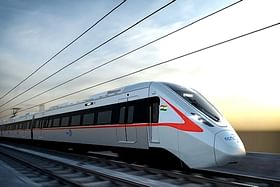Heading out in the north-westerly direction from Delhi, Delhi-Panipat RRTS corridor aims to connect Delhi to towns such as Murthal, Gannaur, Samalkha and Panipat in Haryana.
Populated with a large number of educational and hospitality institutions, the Haryana bound Regional Rapid Transit System (RRTS) corridor would be the catalyst for growth and regional development.
The total length of the corridor will be 103 km, with 17 stations including Murthal Depot Station.
The National Capital Region Transport Corporation (NCRTC) Board, has approved the detailed project report of Delhi to Panipat RRTS corridor.
The government of Haryana recently approved the corridor, while it is under active consideration of the Delhi Government.
According to the initial study, the daily ridership is slated to be around seven lakh per day in this corridor.
Out of 17 stations in the 103-km-long Delhi-Panipat corridor, Kashmere Gate and Panipat North are underground and rest are elevated.


RRTS is a rail-based, high-speed and high-frequency transit system with a design speed of 180 kmph and operational speed of 160 kmph aimed at bringing people and places closer to the National Capital Region.
The RRTS system will provide fast, reliable, safe, comfortable, efficient and sustainable transport solutions and connect Delhi to the urban centres of Ghaziabad, Meerut, Gurugram, Manesar, Panipat etc.
The corridor will encourage polycentric development in NCR and improve the quality of life of the people.
Prioritised Corridors in Phase-1:
Out of eight identified corridors, three are prioritised in Phase-I: Delhi-Ghaziabad-Meerut RRTS Corridor, Delhi-Gurugram-SNB-Alwar RRTS Corridor and Delhi-Panipat RRTS Corridor.
NCRTC has focused on commuters’ ease while designing RRTS rather than opting for engineering comfort.
Multi-Modal Integration:
RRTS stations would be integrated with various modes of transport like airport, Indian Railway stations, inter-state bus terminus, Delhi Metro stations, expressways, wherever possible.
It will facilitate the seamless movement of commuters from one mode to another. Seamless integration between different modes of transport encourages people to use public transport.
All RRTS corridors will be integrated with all the seven lines of Delhi Metro, wherever interconnecting. While RRTS will act as a backbone for regional transportation, Delhi Metro lines will complement it by providing feeder and dispersal services.
All the three corridors of Phase-1 will converge at Sarai Kale Khan and will be interoperable, enabling commuters to travel end to end, from one corridor to another without having to change the train.
All the RRTS stations will have pedestrian-friendly paths, lifts/escalators, sitting areas among various other commuter-centric amenities facilitating ease of access.
All the RRTS stations will have platform screen doors for enhanced commuter safety.
The provision of an executive class coach in each RRTS train will encourage the affluent class to leave their cars/personal vehicles and travel through public transport.
Implementation of Delhi-Ghaziabad-Meerut RRTS Corridor is expected to shift the modal share in favour of public transport from 37 per cent to 63 per cent in the region, which ultimately helps in curbing pollution.
Increased share of public transport will reduce dependence on private vehicles and will lead to less congestion on roads resulting in a reduction in accidents.


